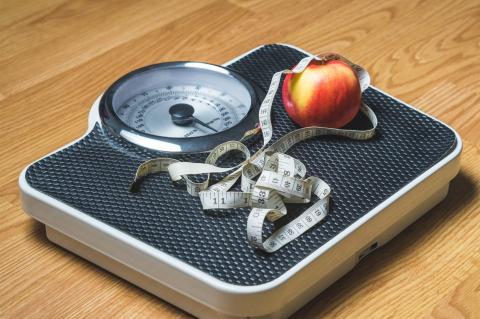Setting S.M.A.R.T. Goals for the New Year

Setting S.M.A.R.T. Goals for the New Year
As the new year approaches, it’s time to start thinking about your goals for 2018. Do you want to eat healthier foods? Make more nutritious meals at home? Lose weight? You’ll find more success achieving your aims if your goals are S.M.A.R.T.
S.M.A.R.T. goals are specific, measureable, attainable, realistic and time-based. What’s that mean?
Specific: Make your goals concrete. Describe them in as much detail as possible. Develop a goal you can describe with the Five Ws: Who, what, when, where and why.
Measurable: Be sure that there’s a way to measure your progress: keep track of the distances you’ve walked, the pounds you’ve lost or the number of healthy meals you’ve eaten.
Attainable: Your goal should be something you can reasonably accomplish within a period of time. As you develop goals, think small at first. As your successes pile up, your goals can grow.
Realistic: Develop a goal that you can accomplish based on your abilities and available resources.
Time-based: Your goal should have a time frame. Maybe you want to lose one pound in two weeks, walk two miles by March, or have a vegetable with every meal by February. By having a timeline, it is easier to hold yourself accountable.
If you use these guidelines while creating your goals, you’ll find your successes will be easier to achieve. Let’s say you want to lose weight and exercise more in 2018. That’s great! But how would do those simple goals become S.M.A.R.T. goals?
Original goals: “I will lose weight. I will exercise more.”
S.M.A.R.T. goals: “I will lose half a pound per week by increasing physical activity. I will walk around the block three times a week.”
Weight Loss Tips
Here are some tips to keep in mind when trying to lose weight in 2018:
- Slow and steady wins the race: Aim for losing between .5 and 1 pound per week.
- Increase physical activity gradually: Start with a few days per week and slowly increase to minimize risk of injury.
- Drink more water: By drinking more water, you will feel fuller between meals, stay hydrated — and your body will thank you!
- Start small: Aim to make one or two small changes each week rather than drastically changing your lifestyle all at once.
- Eat more fruits and vegetables: Aim for filling half your plate with fruits and vegetables at each meal. Have a fruit or vegetable when you snack. Incorporate more fruits and veggies gradually.
Having a smoothie is an easy way to sneak more vegetables to your diet. The flavor of the fruit will mask the flavor of any vegetables you add! Try this smoothie recipe as a quick breakfast or snack. This recipe makes four servings, so share with a friend or save it in the refrigerator for up to 24 hours!
Mango Banana Smoothie
Serves 4
Ingredients
1 medium banana
1 cup mango, fresh or frozen
2 cups 1% milk
1 or 2 handfuls spinach
Directions
1. Wash spinach and pat dry with a paper towel.
2. Chop mango (if using fresh fruit).
3. Peel and place chunks of banana, chopped mango, spinach, and milk into a blender.
4. Blend on highest speed until smooth.
5. Serve immediately.
— Caitlin Porter
